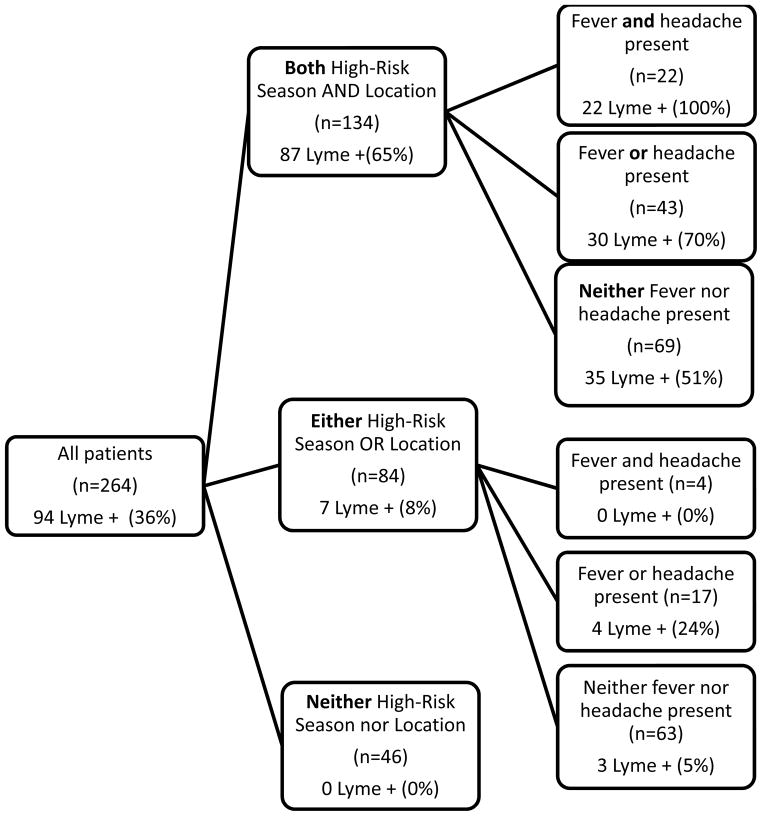Figure 2.
Presence of high-risk predictors among those with and without Lyme facial palsy
Presence of epidemiological and clinical risk factors and rate of Lyme disease among 264 children who presented with peripheral facial palsy. This diagram splits patients by the presence of two, one, or no epidemiological risk factors. Patients presenting from high-risk locations during Lyme season are displayed on the top, further stratified by the presence of clinical risk factors. Patients with only one epidemiological risk factor present are grouped in the middle branch of the tree, and are also further stratified by the presence of clinical risk factors. Patients without either epidemiological risk factor are shown at the bottom of the tree.

